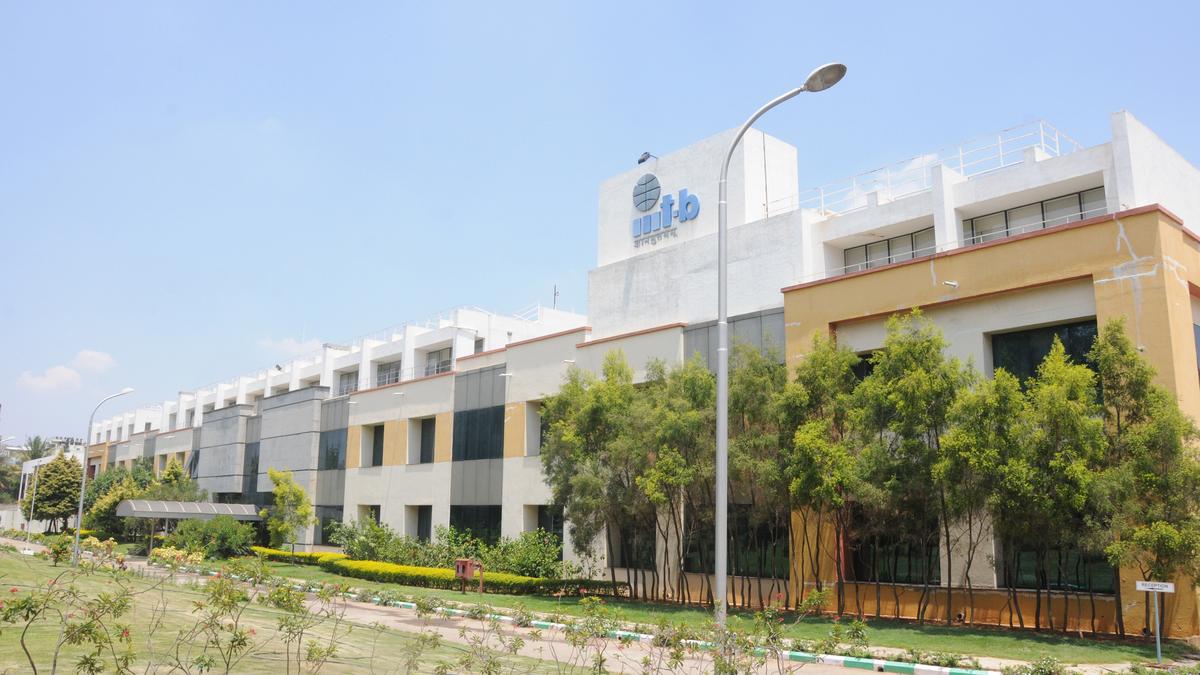
International Institute of Information Technology, Bangalore’s will now direct efforts at developing software-defined RIS with AI-driven control and testing multiple panels working together to further boost performance.
| Photo Credit: File photo
Mobile networks often slow down or drop in places where signals cannot reach properly. Instead of building more towers or expensive infrastructure, researchers at the International Institute of Information Technology Bangalore (IIIT-B) have developed Reconfigurable Intelligent Surfaces (RIS) — panels that act like ‘smart walls’ — to redirect or focus signals. This makes networks faster and energy-efficient and is expected to play an important role in upcoming 6G systems while also improving existing 5G-advanced networks.
Plug-and-play
One of the biggest advantages of RIS is that it can be easily added to existing 5G-Advanced networks as these panels can be mounted on walls or poles to fix coverage gaps in hotspots, working like a plug-and-play upgrade without major infrastructure changes.
For future 6G deployments, RIS can be built directly into the network design, enabling smarter beam management and optimized performance.
In both cases, it allows telecom operators to provide better coverage with fewer towers, cutting both costs and energy use.
“The RIS built at IIIT-B is designed as a ‘passive’ surface, meaning it consumes very little power while shaping signals. This makes it ideal and attractive for urban India, where operators need affordable solutions to improve coverage without adding heavy energy costs. Researchers are also exploring ‘active’ RIS (which can amplify signals but require power) and hybrid designs that combine the two for more advanced functions,” Prof. Debabrata Das, Director, IIIT-Bangalore told The Hindu.
By reflecting and focusing signals, RIS strengthens links in blind spots and extends the range of base stations. This helps operators reduce the number of towers needed without compromising the quality of service.
“For everyday users, that means fewer call drops and faster internet speeds, especially in hard-to-reach areas, like crowded city blocks or indoor spaces,” Mr. Das explained.
The drawbacks of the technology
RIS does face hurdles. In case of fast-moving users, like people in cars, trains, or drones, signals change too quickly, making it hard for the panels to keep up. This can lead to delays or weaker connections. To solve this, researchers are developing predictive beamforming and AI-based mobility tracking that anticipates user movement and adjusts signals automatically.
Mr. Das noted that to work effectively, RIS must be coordinated with nearby base stations. This requires updates to existing network protocols and control signalling. IIIT-B researchers are working on building AI-driven systems that automatically adjust the panels in real time, ensuring smooth performance without manual intervention.
The institute’s next research directions include developing software-defined RIS with AI-driven control and testing multiple panels working together to further boost performance.
cut for print
Technical design
IIIT-B’s team has created a RIS panel that works at 3.5 GHz, which is a key band for 5G. It consists of 256 units arranged in a 16×16 grid, each controlled by a 1-bit PIN diode — a tiny electronic switch that decides how a signal bounces off the surface. By changing the patterns of these switches, the surface can steer signals at different degrees, depending on the need.
The design can also block unwanted signals in certain directions, helping reduce interference.
Published – September 23, 2025 10:29 am IST


